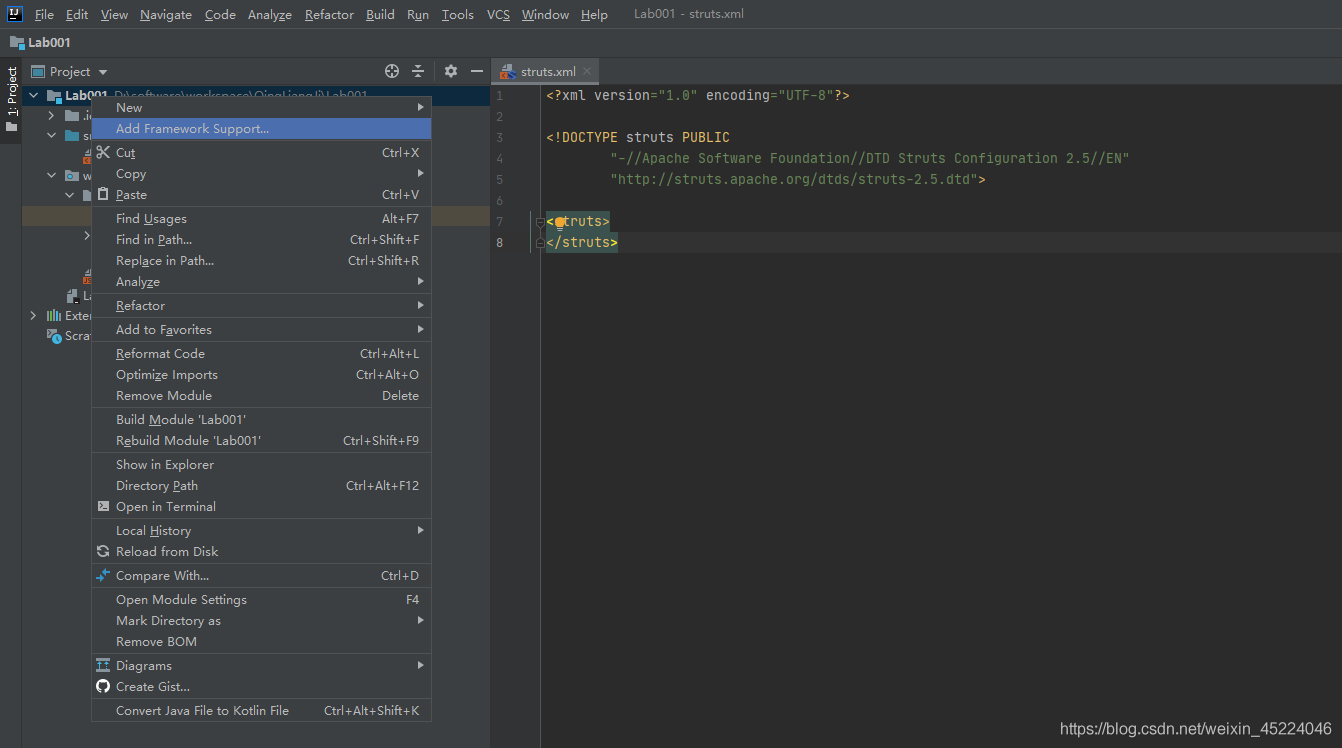Lock是java.util.concurrent.locks包下的接口,Lock 实现提供了比使用synchronized 方法和语句可获得的更广泛的锁定操作,它能以更优雅的方式处理线程同步问题,我们拿Java线程之线程同步synchronized和volatile详解中的一个例子简单的实现一下和sychronized一样的效果,代码如下:
|
1
2
3
4
5
6
7
8
9
10
11
12
13
14
15
16
17
18
19
20
21
22
23
24
25
26
27
28
29
|
public class LockTest {
public static void main(String[] args) {
final Outputter1 output = new Outputter1();
new Thread() {
public void run() {
output.output("zhangsan");
};
}.start();
new Thread() {
public void run() {
output.output("lisi");
};
}.start();
}
}
class Outputter1 {
private Lock lock = new ReentrantLock();// 锁对象
public void output(String name) {
// TODO 线程输出方法
lock.lock();// 得到锁
try {
for(int i = 0; i < name.length(); i++) {
System.out.print(name.charAt(i));
}
} finally {
lock.unlock();// 释放锁
}
}
}
|
这样就实现了和sychronized一样的同步效果,需要注意的是,用sychronized修饰的方法或者语句块在代码执行完之后锁自动释放,而用Lock需要我们手动释放锁,所以为了保证锁最终被释放(发生异常情况),要把互斥区放在try内,释放锁放在finally内。
如果说这就是Lock,那么它不能成为同步问题更完美的处理方式,下面要介绍的是读写锁(ReadWriteLock),我们会有一种需求,在对数据进行读写的时候,为了保证数据的一致性和完整性,需要读和写是互斥的,写和写是互斥的,但是读和读是不需要互斥的,这样读和读不互斥性能更高些,来看一下不考虑互斥情况的代码原型:
|
1
2
3
4
5
6
7
8
9
10
11
12
13
14
15
16
17
18
19
20
21
22
23
24
25
26
27
28
29
30
31
32
33
34
35
36
37
38
39
40
41
42
43
44
45
|
public class ReadWriteLockTest {
public static void main(String[] args) {
final Data data = new Data();
for (int i = 0; i < 3; i++) {
new Thread(new Runnable() {
public void run() {
for (int j = 0; j < 5; j++) {
data.set(new Random().nextInt(30));
}
}
}).start();
}
for (int i = 0; i < 3; i++) {
new Thread(new Runnable() {
public void run() {
for (int j = 0; j < 5; j++) {
data.get();
}
}
}).start();
}
}
}
class Data {
private int data;// 共享数据
public void set(int data) {
System.out.println(Thread.currentThread().getName() + "准备写入数据");
try {
Thread.sleep(20);
} catch (InterruptedException e) {
e.printStackTrace();
}
this.data = data;
System.out.println(Thread.currentThread().getName() + "写入" + this.data);
}
public void get() {
System.out.println(Thread.currentThread().getName() + "准备读取数据");
try {
Thread.sleep(20);
} catch (InterruptedException e) {
e.printStackTrace();
}
System.out.println(Thread.currentThread().getName() + "读取" + this.data);
}
}
|
部分输出结果:
|
1
2
3
4
5
6
7
8
9
10
|
Thread-1准备写入数据
Thread-3准备读取数据
Thread-2准备写入数据
Thread-0准备写入数据
Thread-4准备读取数据
Thread-5准备读取数据
Thread-2写入12
Thread-4读取12
Thread-5读取5
Thread-1写入12
|
我们要实现写入和写入互斥,读取和写入互斥,读取和读取互斥,在set和get方法加入sychronized修饰符:
|
1
2
|
public synchronized void set(int data) {...}
public synchronized void get() {...}
|
部分输出结果:
|
1
2
3
4
5
6
7
8
9
10
|
Thread-0准备写入数据
Thread-0写入9
Thread-5准备读取数据
Thread-5读取9
Thread-5准备读取数据
Thread-5读取9
Thread-5准备读取数据
Thread-5读取9
Thread-5准备读取数据
Thread-5读取9
|
我们发现,虽然写入和写入互斥了,读取和写入也互斥了,但是读取和读取之间也互斥了,不能并发执行,效率较低,用读写锁实现代码如下:
|
1
2
3
4
5
6
7
8
9
10
11
12
13
14
15
16
17
18
19
20
21
22
23
24
25
26
27
28
29
30
31
32
33
|
class Data {
private int data;// 共享数据
private ReadWriteLock rwl = new ReentrantReadWriteLock();
public void set(int data) {
rwl.writeLock().lock();// 取到写锁
try {
System.out.println(Thread.currentThread().getName() + "准备写入数据");
try {
Thread.sleep(20);
} catch (InterruptedException e) {
e.printStackTrace();
}
this.data = data;
System.out.println(Thread.currentThread().getName() + "写入" + this.data);
} finally {
rwl.writeLock().unlock();// 释放写锁
}
}
public void get() {
rwl.readLock().lock();// 取到读锁
try {
System.out.println(Thread.currentThread().getName() + "准备读取数据");
try {
Thread.sleep(20);
} catch (InterruptedException e) {
e.printStackTrace();
}
System.out.println(Thread.currentThread().getName() + "读取" + this.data);
} finally {
rwl.readLock().unlock();// 释放读锁
}
}
}
|
部分输出结果:
|
1
2
3
4
5
6
7
8
9
10
11
12
13
|
Thread-4准备读取数据
Thread-3准备读取数据
Thread-5准备读取数据
Thread-5读取18
Thread-4读取18
Thread-3读取18
Thread-2准备写入数据
Thread-2写入6
Thread-2准备写入数据
Thread-2写入10
Thread-1准备写入数据
Thread-1写入22
Thread-5准备读取数据
|
从结果可以看出实现了我们的需求,这只是锁的基本用法,锁的机制还需要继续深入学习。
总结
以上就是本文关于Java线程之锁对象Lock-同步问题更完美的处理方式代码实例的全部内容,希望对大家有所帮助,有什么问题可以随时留言,小编会及时回复大家的。感谢朋友们对本站的支持!
原文链接:http://blog.csdn.net/ghsau/article/details/7461369
相关文章
- 个人服务器网站搭建:如何选择适合自己的建站程序或框架? 2025-06-10
- 64M VPS建站:能否支持高流量网站运行? 2025-06-10
- 64M VPS建站:怎样选择合适的域名和SSL证书? 2025-06-10
- 64M VPS建站:怎样优化以提高网站加载速度? 2025-06-10
- 64M VPS建站:是否适合初学者操作和管理? 2025-06-10
- 2025-07-10 怎样使用阿里云的安全工具进行服务器漏洞扫描和修复?
- 2025-07-10 怎样使用命令行工具优化Linux云服务器的Ping性能?
- 2025-07-10 怎样使用Xshell连接华为云服务器,实现高效远程管理?
- 2025-07-10 怎样利用云服务器D盘搭建稳定、高效的网站托管环境?
- 2025-07-10 怎样使用阿里云的安全组功能来增强服务器防火墙的安全性?
快网idc优惠网
QQ交流群
-
2025-05-29 59
-
2025-05-29 51
-
2025-05-29 95
-
2025-06-04 110
-
2025-05-25 91











